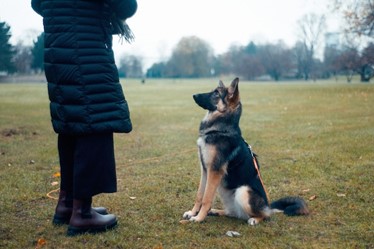Karen Pryor, a pioneer in the animal training world, designed and launched the first Karen Pryor Academy course in 2007. Since then, 13,000 people have taken a KPA course, enriching their lives with animals. Working with the principles of marker-based positive reinforcement, the approach focuses on building forever bonds between dogs and their owners through effective communication.
Katie Barton of Colorado reports that these days, Ken Ramirez, the executive vice president and chief training officer at Karen Pryor Academy, manages the company’s day-to-day. However, the approach is still very much Pryor’s fantastic doing, maintaining its focus on what people often call “clicker training.”
Providing a Language for Dogs and Owners to Effectively Communicate
Dogs communicate in a variety of ways. However, together with their furry friends, people can develop an interconnected language that attains healthy communication with their pet. This is the core principle underpinning Karen Pryor Academy’s method: communication between canine and human that actually works. And marker-based training is how it’s done.
Marker training always relays three messages to do the dog:
- Providing the mark (i.e., a verbal marker) instantly praises the dog for doing something favorable.
- This mark offers a motivational method of encouraging the pup to continue doing what they’re doing.
- When the mark is withheld, the owner is telling their dog they don’t like what they’re doing without using force or punishment.
Offering Negative Reinforcers; Not Correcting Undesirable Behaviors
In old-school dog training days, the consequence of a less-than-desirable behavior was a correction. However, that isn’t on the curriculum at KPA. Instead, the focus shifts toward negative reinforcing, which, believe it or not, is a positive reinforcement technique and does not mean punishment.
When a dog exhibits a likeable behavior, the marker-based positive reinforcement approach dictates that a high-value reward is given. In other words, the verbal marker is provided to encourage and praise the pup.
But what happens when the dog does something unlikeable? The answer is nothing.
The Karen Pryor Academy’s approach dictates that the consequence of a pup not performing the desired behavior is simply no reward (i.e., no verbal marker). And this is known as a negative reinforcer.
After receiving the negative reinforcer, the dog must perform the exercise again if they want to receive the high-value reward.

Rewarding and Reinforcing Quickly
For dogs to correlate rewards and reinforcers with a behavior, it has to come immediately following the behavior — within half a second, ideally.
However, not many people can consistently reward their pup within that split second time frame, regardless of how hard they try. Thus, KPA teaches people to bridge the time frame gap between the behavior and the reward with a marker or verbal cue, such as saying “yes.” Essentially, this marker tells the dog that the handler likes what they just did and they’re going to be given a high-value reward.
Programs and Courses that Change with The Times
At Karen Pryor Academy, they develop and maintain their own curriculum. Therefore, trainers and owners alike can rest easy knowing the content is always evolving with the latest practices and perspectives.
